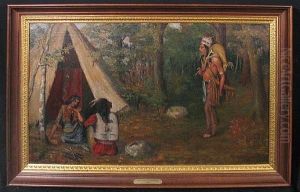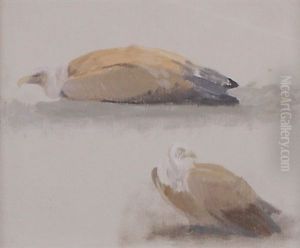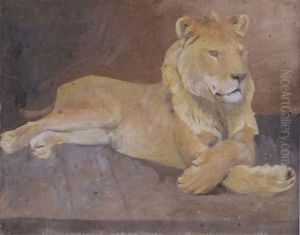Charles Valton Paintings
Charles Valton was a French sculptor born in 1851 in Pau, a city in the Pyrenees in southwest France. He began his artistic training at a young age and was a student of the renowned French sculptor Antoine-Louis Barye, who is often credited with pioneering the Animaliers school, a movement focused on realistic animal sculptures. Valton continued the tradition of Animalier sculpture throughout his career, becoming well-known for his detailed and lifelike representations of animals.
Valton's work was characterized by his acute observation of nature and his ability to capture the essence and vitality of his animal subjects. He often depicted wild animals, including lions, tigers, and bears, and his sculptures ranged from small, intricate pieces to larger, imposing works. Valton's sculptures were not only appreciated for their artistic merit but also for their scientific accuracy, as he was dedicated to studying the anatomy and behavior of the animals he sculpted.
He exhibited regularly at the Paris Salon, an annual art exhibition in France that was the official art exhibition of the Académie des Beaux-Arts in Paris. Valton's works were well-received, and he garnered several awards throughout his career, including a gold medal at the Exposition Universelle in 1889, a prestigious world's fair held in Paris where the Eiffel Tower was inaugurated.
Despite his success, Charles Valton remained a modest artist, dedicated to his craft rather than to fame. He passed away in 1918, leaving behind a legacy of work that continues to be celebrated for its contribution to the Animaliers movement and French sculpture of the 19th and early 20th centuries. Valton's sculptures can be found in various collections and museums around the world, where they continue to be admired for their beauty and realism.


